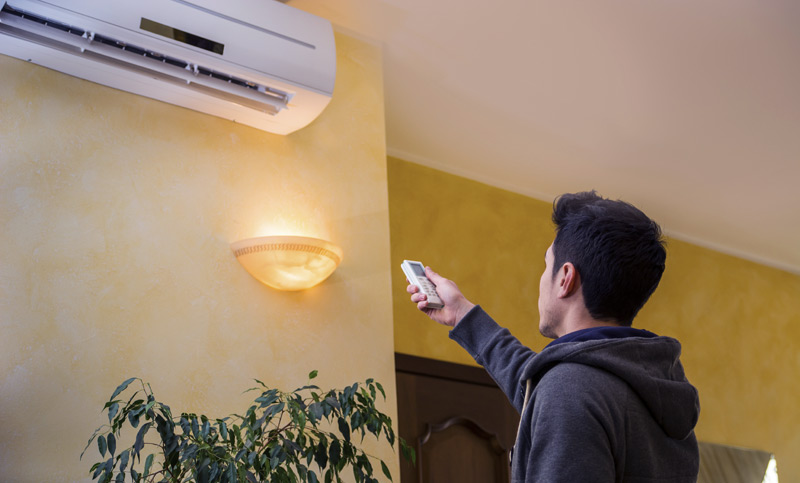When is the best time to buy an air conditioner?
Like many other things, the best time to buy is during the off-season. Contractors will have more time to spend with you to consider your particular needs and to help determine exactly what system is most suitable.
Are there any municipal by-laws that affect the use of air conditioners?
Some municipalities have enacted by-laws that limit the permissible noise level from such equipment. Generally, maximum noise levels are specified at the lot line. Check with your local municipal office to find out if such by-laws are in effect or if there are any additional requirements you will need to satisfy.
Should I replace both my outdoor condensing unit (which includes the compressor) and the indoor coil on my central air conditioning system at the same time?
Yes, under most circumstances. The indoor and outdoor components of central air conditioners are intended to operate together, and the rated SEER is based on tests of these components working together. Matching a new high-SEER condensing unit with an old indoor coil would result in an unknown SEER and probably suboptimum efficiency.
If I am buying a house, how can I make sure that the air conditioning system is in good working order?
You can check the system yourself. Turn the system on and listen for unusual sounds. Feel how cool the air is and how much airflow is coming from the vents. Listen to the indoor and outdoor sections of the system. Within a few minutes of start-up, air from the vents should be considerably cooler than the rest of the air in the house. Although this personal inspection will provide a good indication of normal operation, the best way is to hire an air conditioning contractor to inspect the system.
Should I let the air conditioner fan run all the time (the “on” setting on the thermostat) or only periodically (the “auto” setting on the thermostat)?
Fans require a significant amount of electrical energy to operate. For indoor fans, this energy ends up in the form of heat inside the house, thus adding to the cooling requirement that the air conditioner must meet. So in addition to paying to operate the fan, you will have to pay to remove its heat. The SEER rating for your system was determined assuming “auto” fan operation. Continuous fan operation also reduces dehumidification. For these reasons, fan operation should be restricted to those times when it is providing some tangible benefit.
Sometimes comfort will improve with continuous fan operation by providing a more uniform temperature throughout the house. Air movement also tends to make the body feel comfortable at higher temperatures, possibly allowing you to adjust the thermostat to a higher setpoint.
Is there any relationship between my home air conditioning system and chlorofluorocarbon (CFC) refrigerant damage to the ozone layer?
Both central air conditioners and room air conditioners utilize hydrochlorofluorocarbon (HCFC-22) as a refrigerant. HCFC-22 is not as damaging to the ozone layer as CFCs. HCFC-22 does have some ozone-depletion potential, but it is only 5 percent of that of CFCs, since the molecule breaks down fairly rapidly if released into the lower atmosphere.
In some provinces and territories, it is illegal to release HCFCs into the atmosphere; soon, this will be the case nationally. Only deal with service companies that practise refrigerant recovery and recycling and have the proper equipment and training to do so. Your air conditioner is designed to operate as a closed system and will not release refrigerant as long as it is properly maintained. Have your system checked for leaks and serviced once a year, before the cooling season.
Are there air conditioners other than window room air conditioners for homes without ductwork?
Several air conditioning system options are available to meet this requirement.
- Intended for permanent installation, multi-split systems include up to three indoor evaporator units connected to a single outdoor condenser section. This permits three separate areas or zones to be cooled independently. It is easier to retrofit the interconnecting refrigerant lines and control wiring than to install an air distribution system.
- One type of portable room air conditioner is not intended for window (or wall) installation. Instead, it sits on the floor and may be rolled on its casters into whichever room it is needed. Some of these portables reject condenser heat into a tank of water contained within the cabinet, which must be periodically replenished with cold water.
- Certain central air conditioning systems are specifically designed for houses without air distribution systems. These systems utilize small-diameter air ducts that lend themselves to retrofit installation in walls, ceilings and floors. The small ducts require a special high-pressure air distribution fan to overcome their large pressure drop.
Source: Natural Ressources Canada

